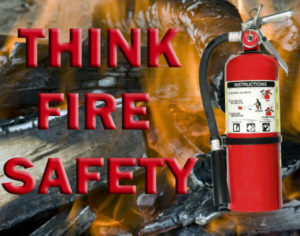While fireplaces can add warmth and beauty to your home, their use needs to be treated with care and caution. By learning how to safely operate your fireplace, you can ensure that the whole  family can enjoy sitting together in front of the fire – without worrying about safety concerns. Following these fire safety tips can help reduce the risk of accident or injury when the fireplace is in use.
family can enjoy sitting together in front of the fire – without worrying about safety concerns. Following these fire safety tips can help reduce the risk of accident or injury when the fireplace is in use.
1. Only burn the designated fuel source
Modern heating appliances can be found for almost any fuel source. Whether your fireplace is built to burn wood, pellets, gas, coal, or another fuel source, it is important to only burn what your fireplace is designed for. The venting systems of gas fireplaces are not designed to handle wood, while burning paper or cardboard in a wood fireplace can cause dangerous, out of control flames. For homes with wood burning fireplaces, seasoned hardwoods are often the best choice, producing the least amount of smoke while creating the hottest flames.
2. Keep the area around the fireplace clear
While the mantle may be a tempting spot to hang or display décor, care should be taken when decorating around the fireplace. Low hanging or other flammable décor should be placed elsewhere in the home – or at least moved when the fireplace is in use. Likewise, curtains, carpets, and other furnishings should be kept at least three feet away from the fireplace to avoid stray sparks and embers; this reduces the risk of house fire and damage to your furnishings.
3. Use gates to keep children away
Glass doors, baby gates, grates, or other safety barriers should be used around the fireplace if there are small children or pets in the home. While older children can be taught to keep away from the flames, babies and toddlers are often too curious to stay away. Using safety barriers can help prevent accidental injuries until children are old enough to understand more about fire safety. No matter their age, children should never be left unsupervised when the fireplace is in use.
4. Test smoke detectors
All homes – even those without fireplaces – should be equipped with fire alarms and carbon monoxide detectors. These safety alarms are especially important in homes with fireplace and should be tested every six months to ensure they work correctly. Smoke detectors should be placed on every level of the home as well as near fireplace and outside sleeping areas.
5. Schedule regular maintenance
Regular chimney and fireplace maintenance is often the most important part of keeping your fireplace safe to use. By having your chimney swept and inspected at least once per year, you can ensure that it is free from damage and can burn safely and efficiently.
Following these fire safety tips can make it easier for the whole family to enjoy sitting together in front of the fire. For more information on how to make your fireplace safer, contact Mason’s Chimney Service today!
